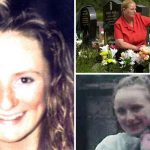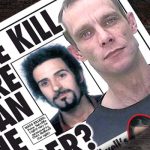Police Media Ops against the NYE Halliwell Investigation
by TIM HICKS & CHRIS CLARK
~~~~~
5.7. Police Media Ops against the NYE Halliwell investigation
The Police and the Media
The police have a difficult relationship with the media, because it is often critical of the police, in accordance with its duty to hold them to account:
“The media also play a vital role in holding the police service to account and in connecting us with the public – this includes highlighting when things may have gone wrong or where policing is under legitimate scrutiny. The relationship should also therefore be challenging and we need to recognise the role the media discharge on behalf of the public in ensuring that we are accountable.
The responsibility to be open, transparent and accountable is part of the Code of Ethics and sits with everybody in policing.
In recent years there has been a perception, rightly or wrongly, that the police have withdrawn and communicate less openly with the media. This does policing a disservice and I am determined that we need to reset the relationship with the media – an appropriate and professional relationship between the police and the media is in the public interest.”
Deputy Chief Constable (DCC) Gareth Morgan (National Police Chiefs Council Lead for Media Relations).
Information Warfare: The NYE’s approach vindicated by the BBC
The murder of independent investigative journalists Daphne Caruana Galizia (NYE tribute here) and Jamal Khashoggi have highlighted the dangers facing journalists that investigate the state and/or criticise public bodies like the police. Accordingly, the NYE has been running a series of articles on information warfare being conducted against journalists.
This theme has now been taken up by the BBC – thereby vindicating the NYE’s approach to this subject and justifying its extension of it from the military, to the police and other public bodies. Jane Kinninmont writing in a BBC article about the Khashoggi case [1] commented:
“Mr Khashoggi’s case is an unusually prominent incident, but it is a symptom of deeper trends – of …….. intolerance of free expression”.
“This trend is exacerbated by the escalating use of information warfare.” [My emphasis in bold].
Information Warfare was until recently a military term but is a very broad concept. It is now applied outside military conflicts and the armed forces. Therefore, a discussion of information warfare terminology is required at this point in the article:
- Information Warfare [2] is a United States military concept involving the collection [2] of tactical information, assurance [2] that one’s own information is valid, spreading of propaganda [2] or disinformation [2] to demoralize [2] or manipulate [2] the enemy and the public, undermining the quality of opposing force information and denial of information-collection opportunities to opposing forces. Most of the rest of the world use the much broader term of Information Operations [2] which has combined the making use of technology, as well as focusing on the more human-related aspects of information use.
- Media manipulation [2] is a series of related techniques in which an image or argument that favors their particular interest of the organisation is promulgated. Media manipulation tactics may include the use of outright deception and often involves the suppression of information [2] or points of view.
- Information Operations and Media Manipulation are often incorporated into Media Operations [8].
In this context, police media operations are part of Information Warfare and can be passive, proactive and/or aggressive. They can include:
- Information suppression.
- Information withdrawal.
- Media manipulation.
- Withdrawal from contact and interaction.
- Media suppression.
- Legal action or threats of legal action.
- Computer.
- Surveillance, both electronic and physical.
- Detention or arrest.
- Stonewalling: “A refusal to communicate or cooperate. Such behaviour occurs in situations such as ….diplomatic negotiations, politics and legal cases. Tactics in stonewalling include giving sparse, vague responses, refusing to answer questions, or responding to questions with additional questions”.
The NYE has covered the murders Christopher Halliwell may have committed, but which the police have not detected. AS a result, the authors assert that it appears the NYE has become the subject of media operations by four police forces.
- Wiltshire Police.
- North Yorkshire Police (NYP).
- Cleveland
- Greater Manchester Police (GMP).
This article covers the response of Wiltshire Police, NYP and Cleveland Police. The next article will cover GMP.
These operations have been aimed at supressing media comment on the failure of the police service to successfully investigate the full range of crimes committed by Christopher Halliwell. Examples of the information warfare techniques applied to the NYE are highlighted in bold in the article.
- Wiltshire Police proactive media operations against the NYE.
Wiltshire Police released this statement to the NYE, which is clear that the ongoing investigation into Halliwell should not be commented on by the media:
“There has been much speculation in the press in relation to other women who may or may not have been a victim of Halliwell. This speculation is not helpful and is very distressing to the families involved. At this time, Wiltshire Police has not uncovered any links between Halliwell and any other murders across the country. We will undertake a proportionate investigation to establish whether Halliwell may have committed any further homicide offences – it would be inappropriate at this time to discuss specific cases.”
A skilful piece of stonewalling to proactively suppress information and supress media comment of this aspect of the investigation into Halliwell’s crimes. It omits to mention that the victims’ families have a right to expect that the police will do everything they can to resolve unexplained murders and disappearances. Or that the media have a duty to report this.
- North Yorkshire Police (NYP) passive and proactive media operations against the NYE: Claudia Lawrence
The NYE regularly runs NYP appeals for information and has recently assisted the NYP Cold Case Review Team on a historic enquiry.
The NYE is aware that we have a following amongst NYP officers and that historically, NYP has monitored our articles for the purpose of obtaining evidence to mount a prosecution against NYE journalists.
Such is the importance that Chief Constable Lisa Winward attaches to the NYE, that on the day she was appointed as Temporary Chief Constable (17th of April 2018), practically her first act as Chief Constable was to write NUJ member and freelance journalist Tim Hicks, (who writes on crime for the NYE). The reason? To inform him that under her leadership, NYP would not recognise him as a journalist, would not recognise the NYE as a media outlet, or respond to any journalistic enquiries from it.
This appears to be a throwback to a bygone age, when the police considered themselves to be above criticism, resented journalists holding the police service to account and did not work with the media. In short, a classic example of media and information suppression by withdrawal as described above by DCC Morgan above.
Predictably, Chief Constable Winward’s approach has had a negative impact on operational policing in North Yorkshire.
The NYE released information in the article The River Tees Murders that Christopher Halliwell had been seen in North Yorkshire. The NYE believes that monitoring of the website by NYP still continues and is conducted by all our fans in the Force Intelligence Bureau and Cold Case Review Unit. So the information that a serial killer who was known to be active as a serial killer between 2003 and 2011 had been in North Yorkshire, is probably known to NYP.
This should have caused NYP some concern, particularly as Halliwell has been linked in the press to the disappearance of Claudia Lawrence in York.
It should also have elicited contact to the NYE from NYP to see if our coverage could produce any more information that would further any missing persons or cold case enquiries. In fact no contact was received (Passive media suppression by withdrawal) and a potential witness has been ignored, as a result of Chief Constable Winward’s media operations policy.
- Cleveland Police passive, proactive and aggressive media operations against The Daily Star and the NYE: The Rachel Wilson case.
Rachel Wilson, aged 19, was last seen on CCTV at 07:02 on the 31st of May 2002 in the Woodlands Road area of Middlesbrough town centre in the “Triangle of Death” around the Shipmate Pub in Middlesbrough (NYE investigations here).
Her naked remains were discovered in woodland in a shallow grave near Newham Hall Farm Estate in Coulby Newham only on the 27th of June 2011.
Chris contacted Cleveland Police suggesting they should consider Halliwell as a suspect. He was told that it had started looking at Halliwell and that at some stage officers would contact him. He recommended that they obtain Halliwell’s known timeline for the North-East from Wiltshire Police and check the victims clothing against the clothing recovered from Ramsbury. Needless to say he heard nothing more from them and a potentially useful line of enquiry was ignored. (Passive media suppression by withdrawal)
Shortly afterwards the Daily Star covered Chris’s belief that Halliwell should be considered as a suspect in the murder of Rachel Wilson, Donna Keogh and Vicky Glass.

However, when the Star put the above article online, Cleveland Police Legal Department instantly sprang into action. It alleged that because a man had been arrested four years ago and was still being held on police bail, the article was “potentially prejudicial”. This tactic was highly successful and the Star was intimidated into removing it. (Aggressive media suppression through implied threat of legal action)
Likewise, when the NYE asked for a press comment on a similar article, the response from their press office was instantaneous:
“our legal dept. is of the view (articulated to the Daily Star which then removed their article on this case) that discussing Rachel Wilson in this way, with a person having been arrested on suspicion of her murder and currently being on bail, is potentially prejudicial. We would advise that you take independent legal advice on this issue.”
“The original arrest was several years ago but bail has been renewed at various points since. Proceedings are active in this regard.”
The implication being that if the NYE published, the authors could be subject to legal proceedings for prejudicing the case against the man on police bail. (Aggressive media suppression through the implied threat of legal action)
Cleveland Police were effectively demanding that the NYE impose a news blackout on the case. This struck the authors as strange, given that no one had been charged, a man had been held on police bail for four years and that in fact legal proceedings were not in progress. So the NYE challenged Cleveland Police’s position.
Letter from Bhatia Best:
Cleveland Police responded:
“As you say our concerns are around the Rachel Wilson case, our legal dept. are concerned that proceedings are active in this case (due to the arrest and bail) and that this should be considered by your client. In effect we have someone arrested on suspicion of murder and your client is saying they didn’t do it (that a serial killer was in fact to blame). You’ll appreciate we felt we needed to flag these concerns. When we raised similar concerns with the Daily Star over the same subject/research they agreed this could be prejudicial and removed their article.
Publication is a matter entirely for your client. We felt we had a duty to inform him of our concerns and having done so feel the matter lies entirely with your client who rightly carries these responsibilities solely.”
(The authors wish to clarify that they have never said that a serial killer was responsible for the murder, or the man on police bail didn’t do it. We have only said that Christopher Halliwell should be considered as a suspect.)
The situation with regard to the Rachel Wilson murder causes the authors some concern:
- Cleveland Police have arrested a man for the murder of Rachel Wilson, but has not charged him. As with the Ann Heron murder, any future conviction of anyone other than this man will result in severe media criticism and possibly legal action against the police. Hence perhaps the opposition of Cleveland Police to media reporting of a credible new suspect. (Confirmation bias. Proactive stonewalling for the purpose of media and information suppression).
- Reporting restrictions come into force when a person is charged with an offence, not when he has been arrested and released on police bail four years earlier. Attempting to prevent the media covering a highly controversial case when there have been no charges brought is a major erosion of press freedom. (Proactive media suppression).
- The arrested man has been on police (or pre-charge) bail for four years, without charge, although this is an infringement of his civil liberties. When the NYE contacted Cleveland Police asking for an explanation of this, it refused to comment. (Aggressive stonewalling for the purpose of media and information suppression).
- Cleveland Police has a history of conducting aggressive information operations against journalists. It falsely alleged they had committed a criminal offence by leaking information to the press [4] Then it used this as a justification to use the Regulation of Investigatory Powers Act to illegally monitor the telephones of two former police officers, their solicitor and two journalists (Aggressive disinformation to justify information suppression and covert surveillance). The full story can be read in these excellent articles by Julia Breen [7] and Graeme Hetherington [7]. His Honour Sir Michael Burton from the United Kingdom Investigatory Powers Tribunal found that there was no proof of criminality and no evidence of Cleveland Police taking any legal advice to support its actions. The officers’ legal team observed that the “force’s casual disregard for the legal framework beggared belief’ [4].
Her Majesty’s Inspectorate of Constabulary and Fire Services (HMICFRS) has recently castigated Cleveland Police over its investigations into the murders of Donna Keogh, Vicky Glass and Rachel Wilson. Excellent article by Naomi Corrigan giving full details here.
“Among the complaints made against the force by Donna’s Keogh’s family were allegations that statements had been lost and crucial witnesses and potential suspects were not interviewed by detectives.”
Interestingly, Cleveland Police initially made the same mistake as the authors assert the GMP made with the Helen Sage case:
“It [The HMICFRS Report] noted that the force did not regard Rachel’s or Donna’s cases as homicides, even after the tragic discovery of Vicky Glass’s body and two other murders of young women – Kellie Louise Mallinson in September 2000 and Sarah Jane Coughlin in August 2003.”
Could this be the reason that Cleveland Police reacted so aggressively to the coverage by the Daily Star and the NYE?
Surely not.
Coming next
In the next article in the series, the NYE will cover the strange case of Helen Sage.
Whenever we run an article on a cold case, the NYE always runs an appeal for information, to try to progress these cases by keeping them in the public eye and generating information. This is in the public interest and can assist the police. We will finish with our usual appeal for information:
NYE Appeal for Information
Have you seen Christopher Halliwell at any time in the period 1987 – 2011?

Claudia Lawrence and Christopher Halliwell
Halliwell had a slim athletic build and spoke with a slight Swindon accent. You can see and hear him in the video here taken while he was in custody.
Any information would considerably assist our knowledge of Halliwell’s movements. So please contact the NYE using our e mail address: news@nyenquirer.uk if you think you can help.
Sources used in the article are accredited in brackets as follows:
[1] BBC article or broadcast.
[2] Wikipedia article.
The NYE Christopher Halliwell series
The NYE has recently run a series of articles on the crimes which may have been committed by serial killer Christopher Halliwell, who is currently serving a full life term for two murders committed in Swindon in 2003 and 2011.
These articles are now arguably the best source of information on the full range of crimes potentially committed by Halliwell openly available.
If you enjoyed this article, you may want to read the others in the series:
- The breaking of Detective Superintendent Stephen Fulcher. By Tim Hicks
- Book review: “Catching a serial killer” by Stephen Fulcher. By Tim Hicks
- Christopher Halliwell and Peter Sutcliffe compared. By Chris Clark & Tim Hicks
- Christopher Halliwell how many victims? By Chris Clark & Tim Hicks
- Christopher Halliwell: The Secret Murders. By Chris Clark & Tim Hicks. Parts 1 – 11.
- Scotland.
- Is Halliwell the “East Lancs Ripper”?
- The other Northern and Midlands cases.
- Have you seen this man?
- The River Tees Murders.
- Halliwells undetected victims.
- Police media operations against the NYE’s Halliwell investigation.
- GMP and Helen Sage.
- York: Did Halliwell murder Claudia Lawrence?
- The Swindon
- InsideOut Justice. Who murdered Linda Razzell?
- Christopher Halliwell the documentary.
- Detective Superintendent Fulcher the TV series.



























Comments are closed.